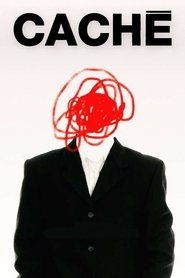Represents his most cunning and elegant interlacing of the concepts that have long obsessed [Haneke]—bourgeois complacency penetrated by strange invaders, the surfacing of subconscious guilt, the ripple effects of violence across generations, and above all, the implausibility of portraying truth in a medium built entirely on fabrication. […] Haneke wastes no time suggesting that what we are seeing might be, indeed, not what we are seeing. The opening credits silently tick on-screen, letter by miniscule letter, assembling like a masthead so that, among the cast and crew and production company names, even the movie’s title is—to borrow its English translation—hidden.
— y Joe McGovern & Ed Gonzalez (Slant)
The point of Yvon’s story [about the dog] was not the truth of the matter; it was what the story produced: the payoff of laughter, the certainty among some that Yvon’s account was merely an elaborate joke, and the lingering potential that some part of his story was true. The message of this scene, and perhaps the entire film, cannot be answered with a single question, such as whether the most obvious aspect of the story was true. Rather, its purpose resides in the acknowledgment of its uncertainty, in how that uncertainty is achieved. […] The film is emblematic of Haneke’s rallying against the “American cinema of distraction” that “deprives the spectator of the possibility of participation.”
— Brian Eggert (Deep Focus Review)
Synopsis: George, host of a television show focusing on literature, receives videos shot on the sly that feature his family, along with disturbing drawings that are difficult to interpret. He has no idea who has made and sent him the videos. Progressively, the contents of the videos become more personal, indicating that the sender has known George for a long time.

